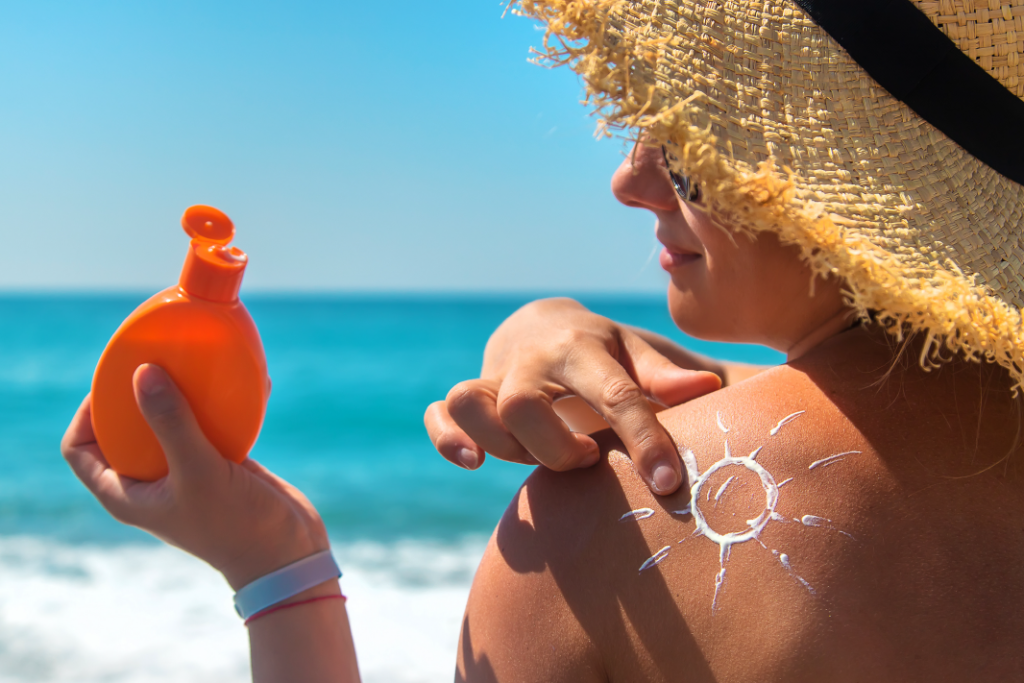National UV Protection Month
July is one of the months with the highest heat index, which motivates many people to have as much fun under the sun as possible; whether it’s a trip to the beach or any other outdoor activities. However, prolonged exposure to the sun can present some health risks. According to the American Cancer Society, most types of skin cancer are caused by excessive exposure to ultraviolet (UV) rays from the sun. In fact, skin cancer is the most common type of cancer in the United States.

Risk Factors
In order to prevent skin cancer, the first thing we must understand is that cancer is not a single disease, but a group of diseases and factors that are related. The National Cancer Institute explains that there are certain factors and habits that have been linked to increasing the possibility of developing cancer. These factors can be divided into two categories: factors that increase risk and factors that affect the risk of developing skin cancer.
Factors That are Known to Increase the Risk of Skin Cancer
1. Peak hours of sun exposure
The time of day is very important, since between 10:00 a.m. through 4:00 p.m. UV rays are more intense. Therefore, safety measures must be taken to protect yourself during midday hours.
2. The season of the year
During certain months, such as spring and summer, we can be exposed to more intense UV rays. In the case of countries near equatorial latitudes such as the Caribbean and Central America, this factor is extremely important, since UV rays are received throughout the year.
3. Altitude
In elevated places, UV rays affect more directly.
4. On cloudy days, UV rays can still have an effect on your skin
Regardless of whether it is a cloudy day or not, UV rays can reach the ground and we must protect ourselves in the same way.
5. Surface Reflection
Sand, water, snow, or concrete pavement can reflect or bounce UV rays, leading to increased exposure.
Skin Cancer Prevention
There are several interventions that allow us to reduce the risk of skin cancer. The National Cancer Institute defines an intervention as “…a treatment or action taken to prevent or treat disease, or otherwise improve health.”
- UV index
If you plan to be outdoors or engaging in water sports, check the daily UV Index to see if additional protective measures are needed. The UV index is detailed in the daily weather report and gives us an indicator of the strength of the UV light in the area. It is rated on a scale of 1 to 11+, indicating that the higher the number, the greater the risk of UV exposure and the greater likelihood of sunburn and skin damage. The EPA website provides more information about the UV index.
- Sun protection
One of the best ways to protect yourself from the sun is to stay in the shade. However, if you are going to spend time outdoors, consider the following recommendations:
-
- Wear UV protective clothing, such as: a hat, cap, or visor.
- Apply sunscreen with a sun protection factor (SPF) greater than 30.
- Protect your eye health with a pair of sunglasses.
- Avoid tanning beds and sunlamps
Keep in mind that tanning beds and sunlamps emit UV rays and can cause long-term skin damage. An alternative to getting a tan without the effects of UV rays is to use sunless tanning lotion.
- Self-examination
Check your skin regularly and see your medical provider if you notice:
-
- A mass or lump (mole or blemish) on the skin
- Any change in size, shape, color, or texture to an existing mole or mass
- Bleeding from a mole or lesion that does not heal
For more information on how to examine your skin, click here.
- Early detection
Early detection tests can help identify skin cancer early, before symptoms appear, so it may be easier to treat or cure. By the time symptoms occur, cancer may have formed and spread to other parts of the body, making it more difficult to treat or cure. Screening tests include:
-
- Physical exam
- Medical and family history
- Lab tests
- Biopsies
- Healthy lifestyles
Living a healthy lifestyle can be a protective factor for your overall health, not just for preventing cancer. It is important that you take into account the following recommendations:
-
- Cut down prolonged exposure to UV rays
- Avoid smoking or exposure to secondhand smoke
- Abstain from excessive consumption of alcoholic beverages
- Minimize eating highly processed foods, processed and red meats
- Reduce your consumption of artificial sweeteners and sugars
- Exercise at least 2.5 hours a week
- Schedule an annual preventive exam
Sunburns are classified as thermal burns that cause redness of the skin and pain. For relief and recovering of skin damage, it is recommended to:
-
- Apply a cold cloth to the affected area
- Use aloe vera cream or gel to cool off the area
- Avoid sun exposure until healed
- Stay hydrated and avoid alcoholic beverages
- Seek medical help if fever, vomiting, or headache occurs
Remember that skin damage from UV exposure can be reflected over time. Protect yourself and your family members from UV rays!
References:
- American Cancer Society. (2019). How do I protect Myself from UV Rays? American Cancer Society. https://www.cancer.org/cancer/risk-prevention/sun-and-uv/uv-protection.html
- National Cancer Institute (NCI). (2022). Cancer Prevention Overview. NIH. https://www.cancer.gov/about-cancer/causes-prevention/patient-prevention-overview-pdq
- Office of Disease Prevention and Health Promotion (OASH). (2022). Take Steps to Prevent Skin Cancer. OASH. https://health.gov/myhealthfinder/health-conditions/cancer/take-steps-prevent-skin-cancer

